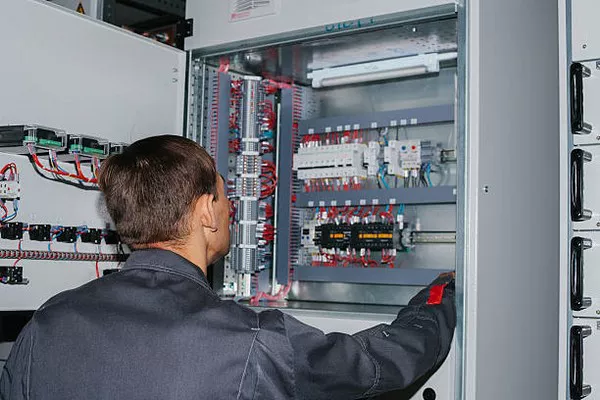Transformers play a fundamental role in electrical power distribution and transmission, relying on specific types of currents to function efficiently. This article explores the currents utilized in transformers, their characteristics, and the principles governing their operation.
1. Alternating Current (AC): The Primary Transformer Current
Transformers predominantly operate with alternating current (AC), a type of electrical current that reverses direction cyclically. AC is well-suited for transformers due to its ability to induce magnetic fields within the transformer’s windings, essential for stepping up or stepping down voltages. The process of electromagnetic induction underpins the functionality of AC in transformers, facilitating efficient energy transfer across varying voltage levels.
How AC Enables Transformer Operation
AC current is characterized by its periodic changes in direction, typically following a sine wave pattern. In a transformer, AC current flowing through the primary winding generates a magnetic field that fluctuates in intensity. This changing magnetic field induces a voltage in the secondary winding, proportional to the winding ratio, thus facilitating the transformation of electrical energy to different voltage levels.
2. Direct Current (DC): Limited Role in Transformers
While AC is the primary current used in transformers, direct current (DC) has limited applications within certain types of transformers, such as rectifier transformers used in DC power transmission systems. DC currents lack the oscillatory nature of AC, leading to distinct operational challenges and necessitating different transformer designs for efficient DC voltage conversion.
Challenges with DC in Transformers
DC currents do not induce the alternating magnetic fields required for conventional transformer operation. This limitation necessitates specialized transformer configurations, such as rotating machines or solid-state devices, to convert and control DC voltages effectively.
3. Implications of Frequency on Transformer Design
The frequency of the AC current used in transformers is a critical design parameter that influences transformer performance. Standard power systems often operate at frequencies of 50 or 60 Hertz (Hz), affecting the transformer’s core design, material selection, and overall efficiency.
Frequency and Core Design
Higher frequencies necessitate transformer cores with reduced magnetic flux densities to minimize energy losses due to eddy currents and hysteresis. Design considerations must balance core material properties with desired transformer performance characteristics at specific frequencies.
4. Specialized Currents in Modern Transformers
In addition to conventional AC and DC currents, modern transformers employ specialized currents tailored for specific applications, including:
(a) High-Frequency AC
Transformers used in radio frequency (RF) applications or high-frequency power electronics often require custom designs to account for skin effect and proximity effect phenomena. These transformers must efficiently handle currents at frequencies significantly higher than standard power frequencies.
(b) Pulsed Currents
Certain transformers are designed to handle pulsed currents, common in applications such as welding transformers or those used in pulsed power systems. The design of these transformers emphasizes peak current capability and response times to accommodate transient loads.
(c) Three-Phase AC
For industrial and commercial power distribution, three-phase AC currents are employed to transmit electrical power efficiently over longer distances. Three-phase transformers are specifically designed to handle the unique characteristics and requirements of polyphase AC systems.
Conclusion
Understanding the types of currents utilized in transformers is fundamental to appreciating their diverse applications in electrical power systems. While AC remains the primary current for transformer operation, emerging technologies continue to drive the development of transformers capable of efficiently handling specialized currents for evolving energy needs. By integrating innovative design concepts with established principles of electromagnetic induction, transformers continue to play a crucial role in shaping the future of electrical power distribution and transmission.

